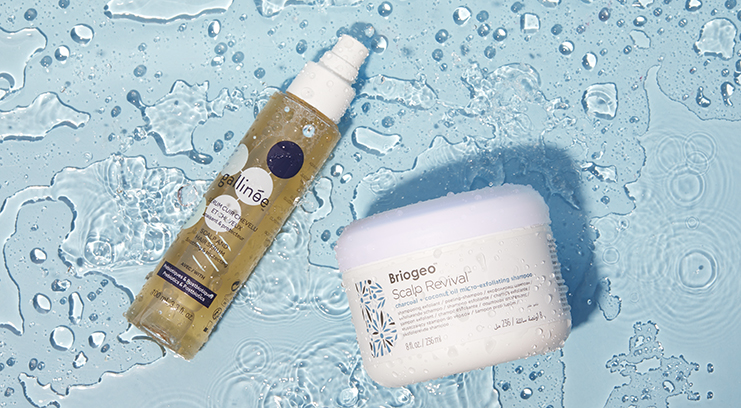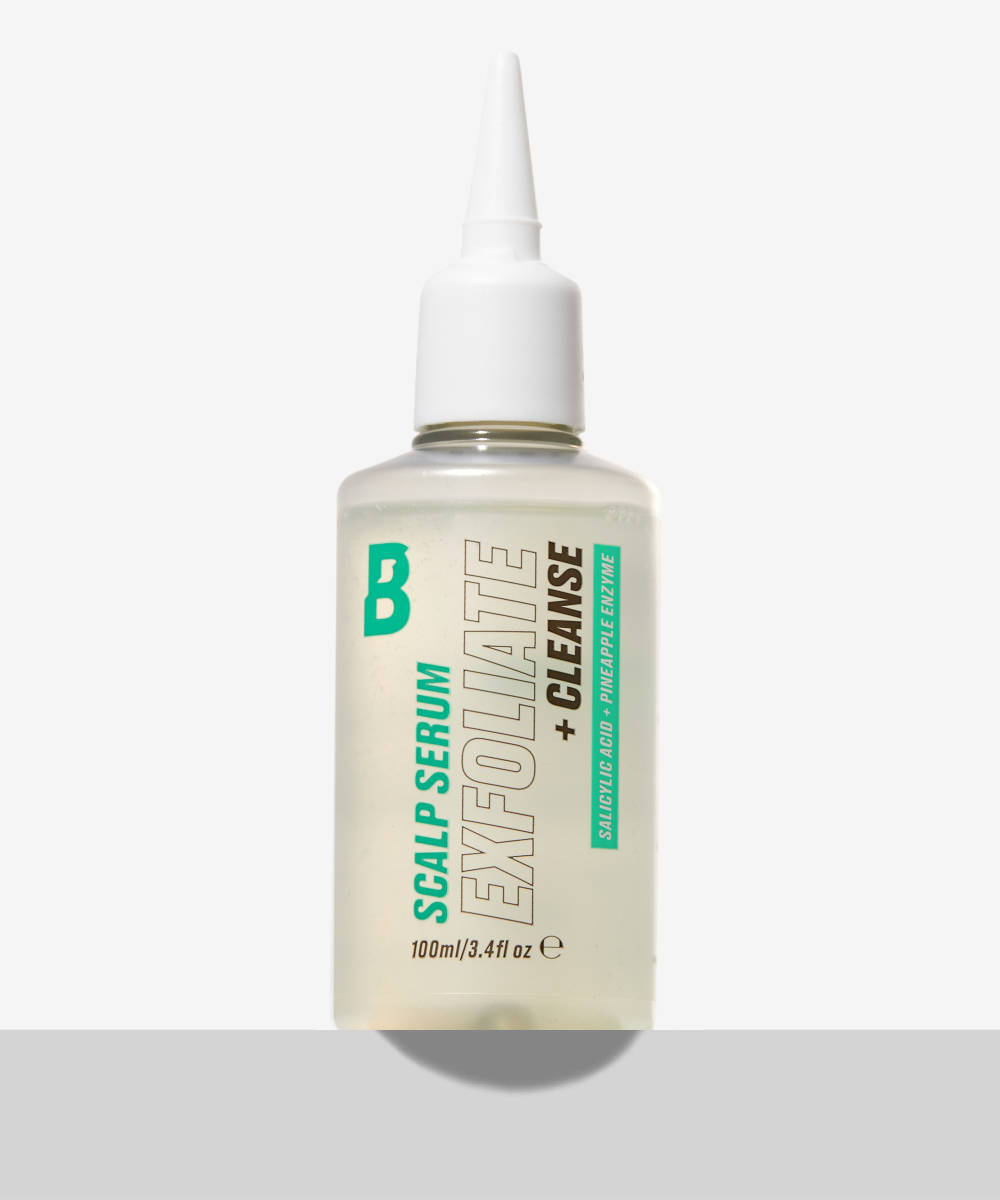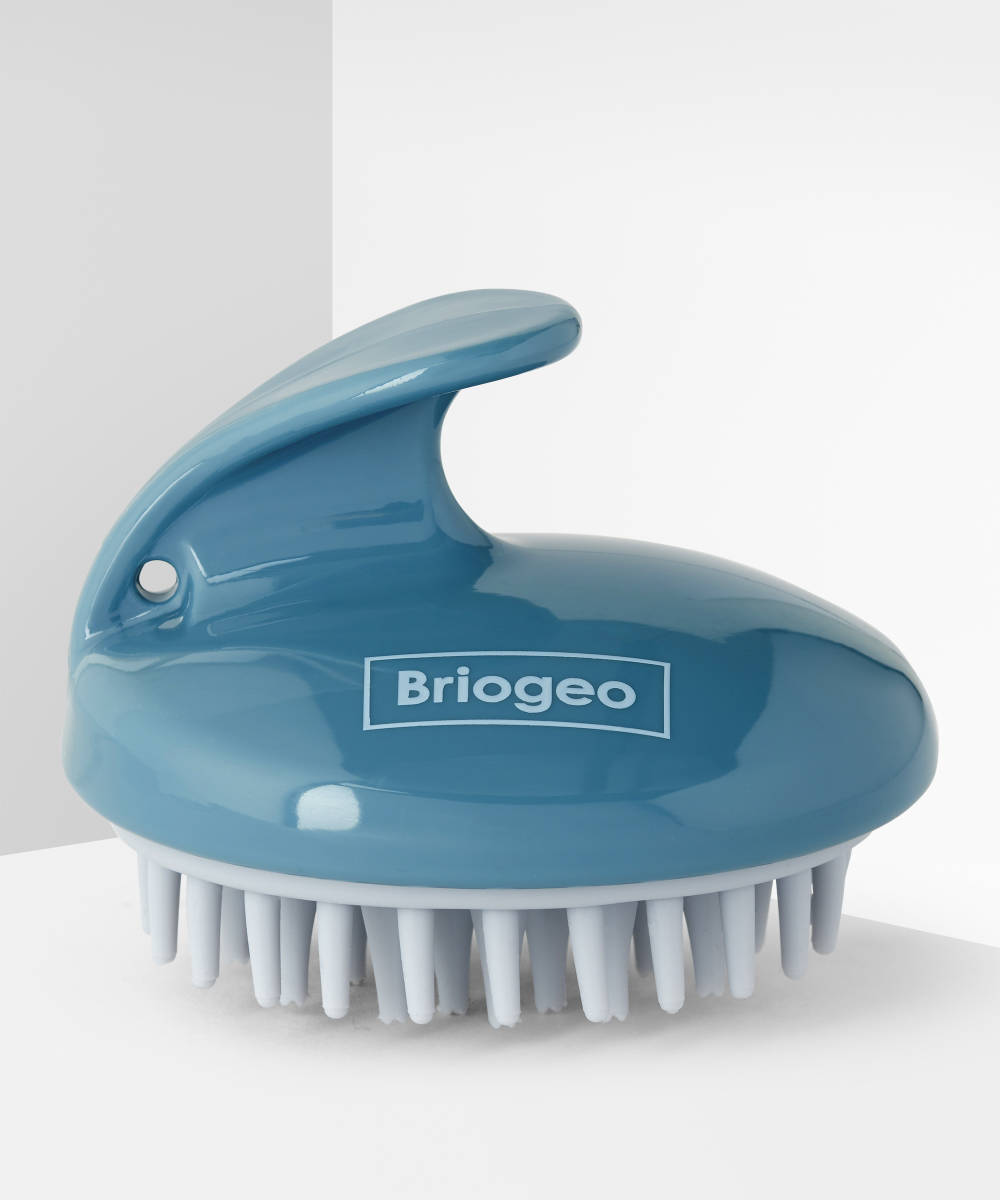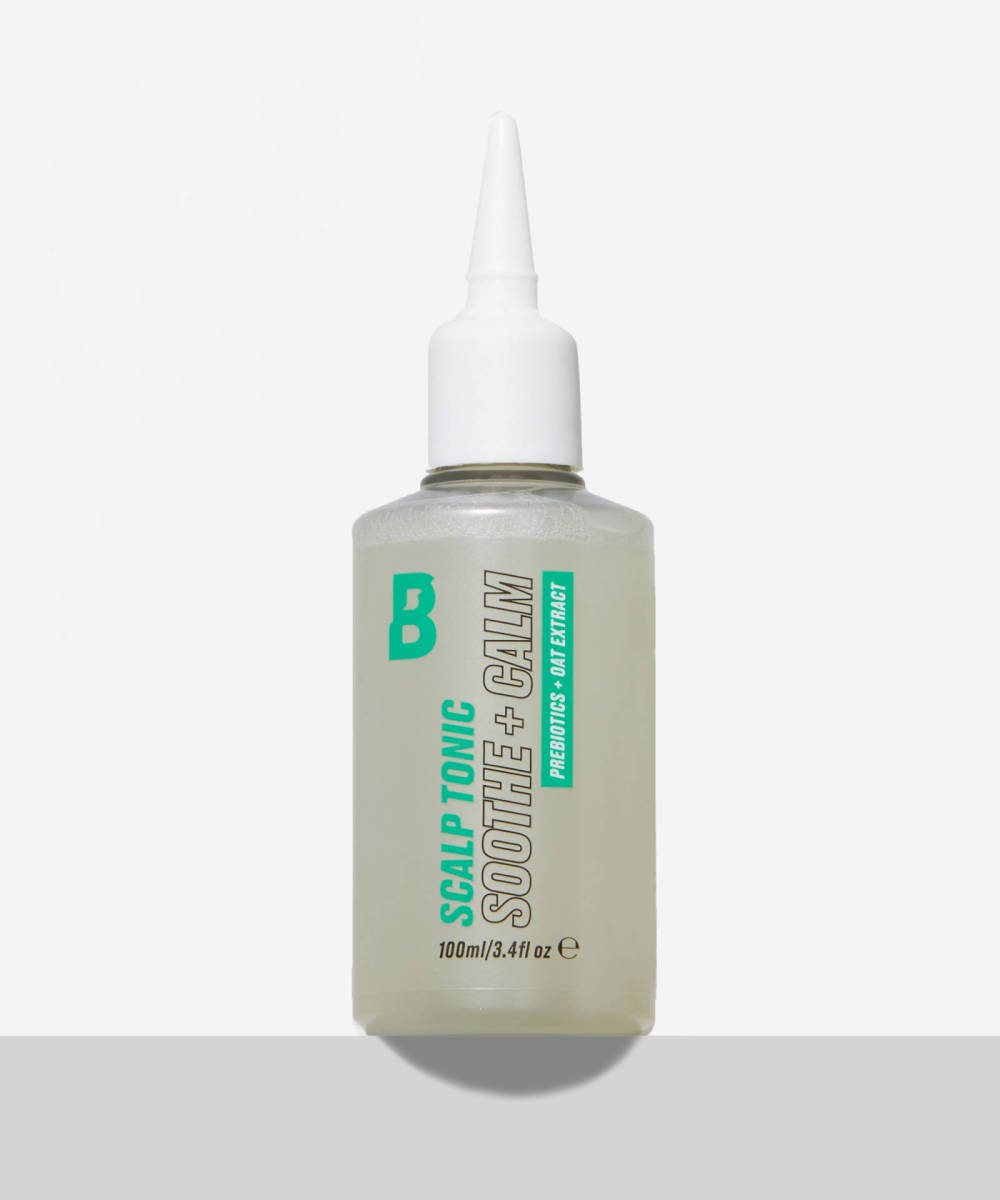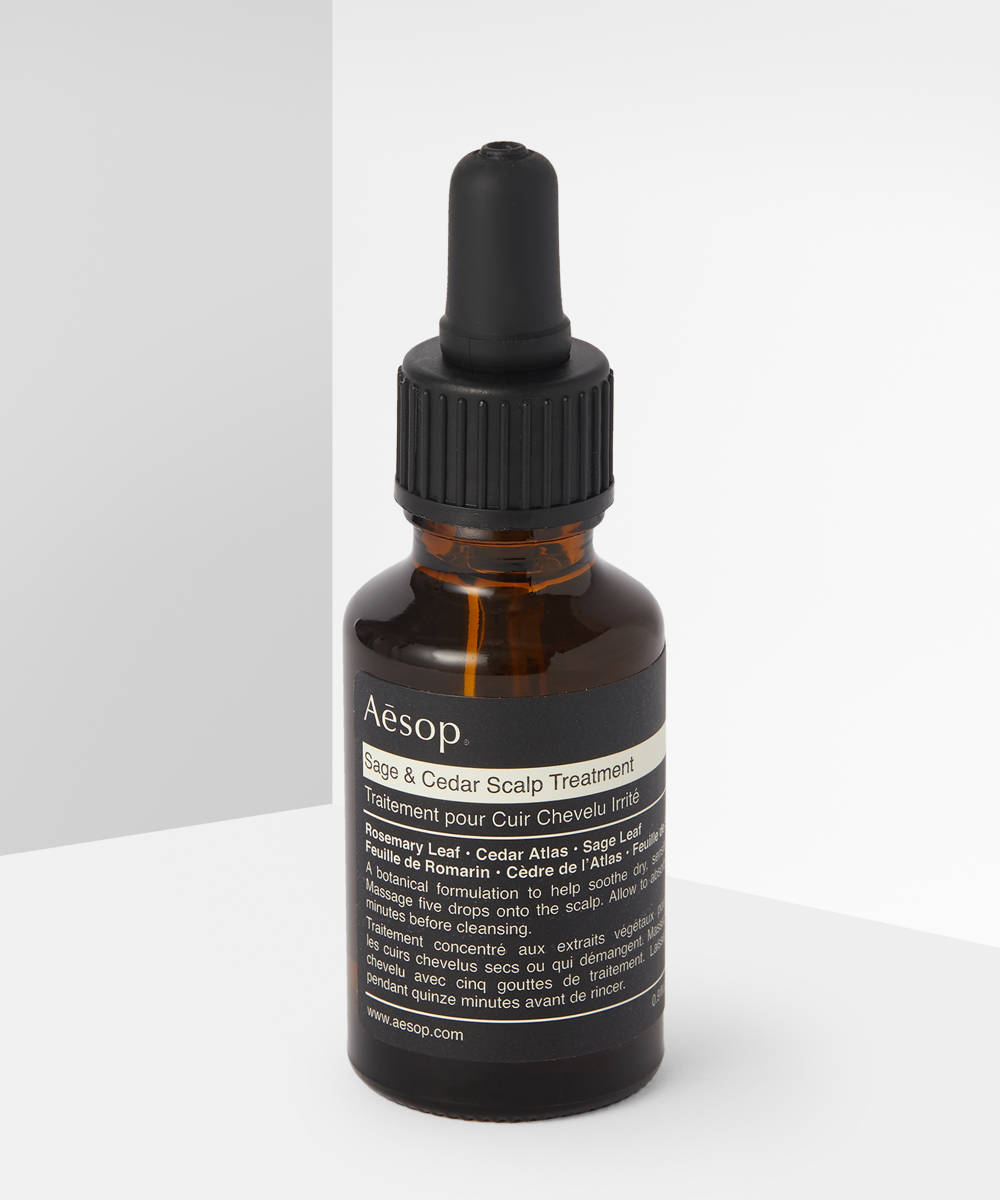It’s become second nature to inflict a twice-daily multi-step routine upon our skin – cleansers, toners, serums, moisturisers, scrubs, masks, you name it. But when it comes to our scalp we’re less proactive, less informed, and less willing to discuss it. Words like ‘dandruff’ and concerns that involve flaky skin and greasy hair aren’t glamourous and it’s easy to see why no one wants to talk about it. We’ve normalised skin concerns like acne and we debate tampons vs menstrual cup with our friends, so maybe we feel like scalp concerns are the last big beauty taboo?
And yet, these issues are super common. I recently ran a poll on my Instagram stories where 84% of 289 responders said they frequently experienced scalp issues, ranging from dry skin and dandruff through to greasy roots, psoriasis, and extreme itchiness. I’m in the midst of my own ongoing battle with a dry scalp easily triggered if I use the wrong shampoo (an occupational hazard!), and my hairdresser, Melissa Timperley said she’s noticed increasing interest from clients wanting to address their scalp issues. ““We get a lot of scalp concerns in the salon – it’s more common than you’d think.” says Melissa. “Perhaps 1 in 10 clients ask us about scalp problems, and it can be anything from dandruff to psoriasis.”
Thanks to rises in Google search terms around scalp care (+60% in the last 12 months), beauty brands have cottoned on to the growing need for consumers to address their scalp concerns with specialist products – just as we would change our skincare routine based on experiencing a breakout or dry spell. These days, it’s much easier to treat scalp issues because there are scalp treatments beyond regular shampoo – products designed to exfoliate it, nourish it, stimulate it, and above all, balance it.
This is the most important thing to remember – it all comes down to balance, and when things are thrown out of balance, issues arise. According to Melissa (the first person I consult on all things hair) you need to treat your scalp with the same TLC you show to the rest of your skin. “Your scalp is the skin’s protective layer and if anything is irritating it, it then goes into overload and produces more skin cells to make a thicker protective barrier” says Melissa. Lisa Borg, skin expert at Pulse Light Clinic, confirmed this: “It is as important to take care of your scalp as it is to take care of the rest of your skin”, she advises. “The scalp can reveal much about one’s overall health. Remember that the skin is a barrier and the largest organ of detoxification, and the scalp is included.”
Most people are clued up on their skin type, but figuring out your scalp issues is a whole different ball game. It can be hard to tell the difference between scalp issues – contrary to popular belief, dandruff is not the same as dry skin, and you can experience dryness and greasiness at the same time.
So, how do you figure out your scalp issue and what can be done about it? We asked Melissa and Lisa to weigh in.
Dry Scalp
What is it?
Just like dry skin on the rest of your body, a dry scalp means your skin’s barrier function is weakened and it’s more prone to irritation and sensitivities. As the skin becomes drier, it begins to flake off.
Symptoms
Small, dry, white flakes in your hair that may flake and fall, but not to an extreme. Itchiness is common, and you probably identify with having a dry skin type or experience dry skin elsewhere on your body.
Triggers
If you have dry skin then you’re more likely to experience a dry scalp, too, especially if you’ve been diagnosed with a dry skin condition. According to Lisa, “Those with underlying inflammatory conditions such as psoriasis, eczema and rosacea can be prone to poor scalp health .” In addition, cold, dry air can be a trigger – many people experience a dry scalp (and dry skin) during the winter months.
Tips
Wash your hair with a gentle sulfate-free shampoo and use a moisturising conditioner on your scalp too since your skin needs the extra hydration. You could also apply a hair oil or melted coconut oil to your scalp as a pre-shampoo treatment. Massage it into your scalp and leave overnight or for a few hours. It can sometimes be hard to tell the difference between dry skin and dandruff, but dry skin should clear up quickly once you follow these steps, whereas dandruff is more stubborn.
Dandruff
What is it?
“Dandruff is an excessive production of dry, flaky, dead skin cells that may or may not cause itching” says Lisa. “It doesn’t usually present with inflammation, redness or scabbing, but in cases where these are present there is likely an additional issue which exacerbates the dandruff.”
Symptoms
The main one is large, oily flakes that are white or yellow and fall easily and often. You may also experience itchiness, and your scalp might feel oily or scaly to touch. Some people also experience dandruff in their eyebrows or beard, along the hairline, and behind the ears.
Triggers
The root cause of dandruff usually lies with the naturally-occurring yeast present on the scalp. This is present to moisturise the scalp, but as it breaks down it produces oileic acid, which some people are more sensitive too than others. Sensitive scalps respond by becoming irritated and inflamed which signals to the body to speed up the process of shedding skin cells (causing the flakes). This process can be made worse by a number of factors. For example, if the scalp is prone to dryness or oiliness, if it’s further irritated by products, if its exposed to dry air and pollution, or if your diet lacks zinc and omegas.
Tips
Don’t go straight for the dandruff shampoos. “Most dandruff shampoos don’t work, as they strip the scalp, causing it to feel exposed and therefore produce even more skin cells for protection” explains Melissa. Instead, try something gentle, designed to balance your scalp instead, and wash your hair frequently to prevent dead skin cells from having a chance to build up and lead to flaking. Incorporate exfoliation into your routine, preferably with a salicylic acid-based treatment, used once or twice a week before shampooing.
Buildup
What is it?
A combination of products, pollution, and dead skin cells that builds up on the scalp and in the roots of hair.
Symptoms
Roots feel heavy and coated, almost sticky. When you’re styling your hair you may find it feels stiff and hard to manipulate into shape. You’ll notice your hair quickly feels unclean within a short time after washing it. If you scratch your head, your finger may pick up a grey-ish residue, and if the build-up is really bad, you’ll experience itchiness as well.
Triggers
Your hair styling products may claim to be ‘weightless’ but ultimately, they end up on your scalp, blocking pores, which prevents the skin from being able to exfoliate away dead skin cells. Dry shampoo is the worst offender – there’s nowhere for it to go and if you apply it often then it quickly builds up.
Tips
Cut back on the number of products you use, especially dry shampoo and wash your hair more often so product doesn’t have as much time to build up. To get rid of stubborn buildup, you’ll need to exfoliate your scalp with a scrub or with an acid-based chemical exfoliant designed specifically for the scalp or use a scalp brush to manually exfoliate the scalp. These products will break down the build-up, lift away the debris, and stimulate cell turnover.
Greasy Roots
What is it?
Greasy roots are typically caused by an oily scalp, so you’ll be more prone to this if you identify with having oily skin. Our hair follicles meet with oil glands which produce sebum to naturally moisturise our hair, but these can often be triggered into overdrive an produce excess oil.
Symptoms
Roots feel heavy and cause hair to appear flat, they are shiny in appearance and oily to touch. Hair quickly turns greasy within a very short time of washing hair.
Triggers
Any combination of hot weather, exercise, touching your hair too much, over-conditioning, a dirty pillowcase, or excess use of hair products can lead to greasy roots. Over-conditioning is the most common, but is easy to avoid.
Tips
It might sound counterintuitive, but applying an oil treatment or melted coconut oil to your scalp can help to balance out the scalp’s excessive oil production. Oil attracts oil, so it’s an efficient way to draw out it out and remove it. Leave the oil on for a few hours or overnight and be sure to wash out thoroughly. Avoid doing this too often, make sure you wash your hair frequently, and never apply conditioner to your scalp – keep it to the lengths and ends of your hair.
What if I’ve got a combination of these issues?
It’s important to remember that these hair conditions are not contraindicative. If you experience buildup this may lead to a greasy scalp, and if you experience oiliness or dryness, this may exacerbate dandruff, so while the lines are blurred, the general consensus is to balance the scalp with gentle products, exfoliation, and regular washing. One flag that Lisa raises is for those experiencing oiliness and dandruff: “I’d usually suspect seborrhoeic dermatitis, which is one of the more common scalp issues that I see in clinical practice”.
What products can help with scalp issues?
Lisa recommends looking out for ingredients like coconut oil: “a fantastic addition to any haircare routine because it has anti-fungal, anti-yeast, and anti-bacterial properties” and also lemongrass oil, “which is particularly helpful for dandruff, while tea tree oil, lavender, rosemary and oregano oils can be allies against fungi and yeast.” Probiotics are another brilliant ingredient to look out for in haircare – a skincare crossover that I’ve personally seen visible results from. All of the above issues feature an imbalance of the scalp’s microbiome, but probiotics help to restore and balance it.
